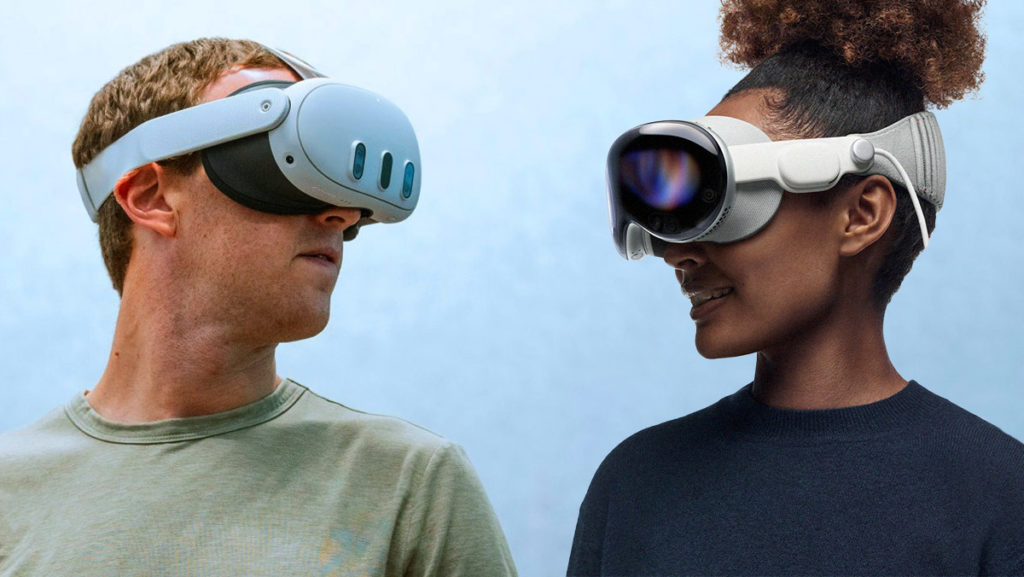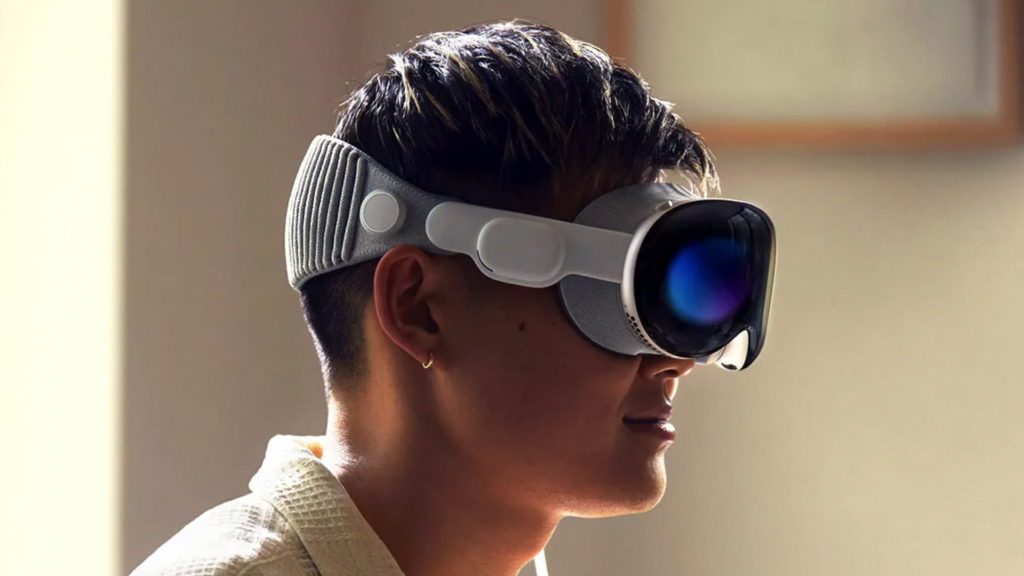
Is “Spatial Computing” What Zuckerberg’s Metaverse Should Have Been?
Looking back at the WWDC 2023
(2023-08-11, Boston, MA, Editorial by Jake Bourke) Apple’s WWDC 2023 keynote sent shockwaves throughout the tech industry as the final forty minutes of their livestream spotlighted the announcement of the Apple Vision Pro mixed reality headset. With this new product concluding the show, the company has officially made its grand splash into the competitive but still rising VR and AR market after several months of rumors and speculation.

Given the projected release date of “early 2024,” the Vision Pro is a curious announcement timing-wise. Though it seemed a given Apple would be releasing a proprietary headset after incorporating several uses of AR technology into their iPhones and iPads, companies are no longer glorifying these headsets as aggressively as they were in 2021 and 2022.
Mainstream investment in the Metaverse has waned, and while virtual reality technology still has its niche lure and captive audience, companies that previously spearheaded the development of the Metaverse, marketing it as the future of community, commerce, and communication –– including Mark Zuckerberg’s Meta –– have switched their focus to other ventures such as generative AI.
The Metaverse, though its ambition was heralded by several notable figures in the tech industry, was frequently criticized and ridiculed for selling what many people saw as old, wide-adopted technology repackaged as a brand-new and unseen invention. “Most of the people who are talking about Metaverse have absolutely no idea what they’re talking about,” said Valve president Gabe Newell in a 2022 interview with PCGamer. “And they’ve apparently never played an MMO. They’re like, ‘Oh, you’ll have this customizable avatar.’ And it’s like, well… go into La Noscea in Final Fantasy 14 and tell me that this isn’t a solved problem from a decade ago, not some fabulous thing that you’re, you know, inventing.”
However, Apple’s ambition pivots in a different direction: spatial computing. As the term suggests, the Vision Pro focuses on utilizing the physical space, working in tandem with Apple’s other devices to realize a unique experience designed to streamline and bring work to the future. Unlike the Metaverse, Apple’s approach to spatial computing is creation and productivity-oriented, with entertainment and gaming largely deemphasized compared to competing headsets.

The Metaverseis revolutionary, an all-digital space transforming how people see communication, recreation, and work. It has been touted as an all-in-one platform nearly indistinguishable from real life. I believe that wide-sweeping ambition is why the audience for virtual reality hasn’t grown more quickly.
The Apple Vision Pro, conversely, is a focused product that understands its specific function and the audience it’ll be appealing to: designers, engineers, businesspeople frequently traveling across the country, and most of all, current Apple customers.
Apple understands its product, its appeal, and the experience it will deliver, and its marketing reflects this confident mindset.
The Vision Pro, is an ambitious product with a lot on the line, especially with its high-end $3,500 price tag, but it has the potential to reinvigorate mainstream interest in mixed reality technology with its scaled-back initiative. Setting aside the expansive virtual worlds and legless digital avatars and instead focusing on parity between Apple computers and the capabilities of its augmented reality hardware will give tech consumers a more cohesive idea of the product they’ll be buying.

Will Apple’s foray into mixed reality eventually lead to familiar roads previously traveled by Meta? With technology constantly evolving, anything is possible, and perhaps it won’t be long before we see Meta reenter the mixed reality space with their own take on spatial computing.